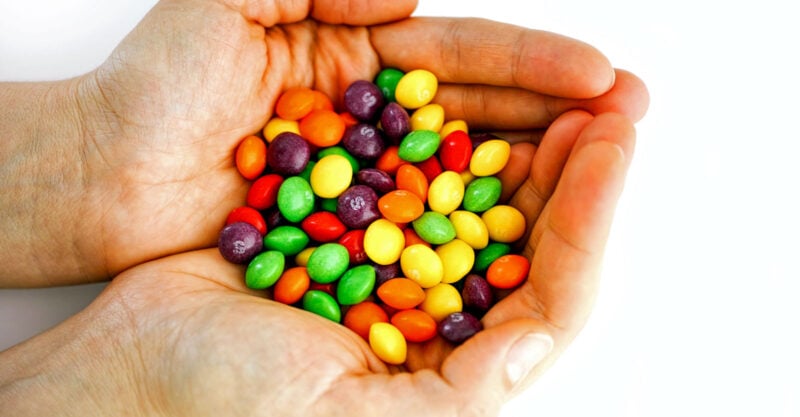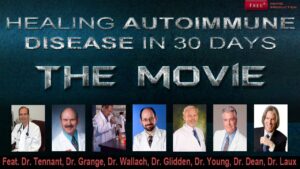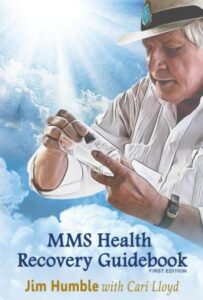Foods Containing These 5 Toxic Chemicals Could Be Banned Under New Law
California lawmakers are hoping to ban five toxic chemicals used in the manufacture of many processed foods. Combined, the chemicals damage the central nervous system, disrupt the gut microbiome and are linked to hyperactivity in children. 5 Toxic Chemical Foods Could Be Banned Under New Law
Story at a glance:
- California lawmakers are hoping to ban five toxic chemicals used in the manufacture of many processed foods, including titanium dioxide, potassium bromate, brominated vegetable oil, red dye No. 3 and propylparaben.
- Combined, these chemicals are estrogen disrupters, lower sperm count, are known to cause cancer in animals and humans, disrupt the gut microbiome, damage the central nervous system, cause loss of memory and muscle coordination, and are linked to hyperactivity in children.
- If enacted, the bill would prohibit the manufacture, sale and distribution of products containing these chemicals, such as Skittles, Sour Patch Kids, jellybeans, Pez candy, Campbell’s Soup and Trident sugar-free gum to name a few.
- Foods that most people overlook are condiments that are far from benign and can have a cumulative biological effect. Making mayonnaise, sour cream, salad dressing and ketchup at home takes just a few minutes, helps reduce excess sugar in your diet and eliminates artificial preservatives, dyes and flavor enhancers.
California lawmakers are hoping to ban the addition of five toxic food additives in foodstuffs sold in California that the U.S. Food and Drug Administration (FDA) approves for use but are associated with cancer and organ and DNA damage.
According to the FDA, “Today, food and color additives are more strictly studied, regulated and monitored than at any other time in history.”
In other words, the FDA allows food additives for U.S. consumption that other countries ban even though additives are more strictly studied and regulated “than at any other time in history.” Two groups of food ingredients are exempt from regulation.
The first are substances that were approved before 1958 and the second are those that are generally recognized as safe (GRAS) based on use before 1958 or published data.
The FDA also states that their regulations: “Require evidence that each substance is safe at its intended level of use before it may be added to foods. Furthermore, all additives are subject to ongoing safety review as scientific understanding and methods of testing continue to improve. Consumers should feel safe about the foods they eat.”
And yet, despite these statements, the evidence does exist that the five food additives California lawmakers would like to ban, and which are currently approved by the FDA for use in food products, are dangerous for consumers and may place your health at risk.
California takes the lead on eliminating five food toxins
In February, California assemblymember Jesse Gabriel, D-Woodland Hills, proposed Assembly Bill 418 that would prohibit food containing red dye No. 3, potassium bromate, propylparaben, brominated vegetable oil and titanium dioxide from the sale, manufacture and distribution in the state.
In a press release from the assemblymember’s office, Susan Little, governmental affairs senior advocate for the Environmental Working Group (EWG) asked:
“Why are these toxic chemicals in our food? We know they are harmful and that children are likely eating more of these chemicals than adults. It makes no sense that the same products food manufacturers sell in California are sold in the EU but without these toxic chemicals. We thank Assemblymember Gabriel’s efforts to remove these toxic additives from California’s food supply.”
Some of the foodstuffs containing these toxic chemicals include Skittles, Sour Patch Kids, jellybeans, Pez candy, Campbell’s Soup and Trident sugar-free gum.
Other consumables on the chopping block include Old El Paso sauce, Hot Tamales candy, Sun Drop soda and some breads.
If the bill passes and becomes law, it will also prevent companies from manufacturing products with these chemicals inside the state, even if they’re not sold in California. Although the bill is aimed at protecting California, Gabriel hopes that it could have a national impact.
He explained to a reporter from the Daily Mail that he hopes companies will change their recipes as they’re unlikely to pull their products and abandon the large California market. However, Mars Inc. already makes a different version of Skittles sold in the EU, yet continues to sell the more toxic form in the U.S.
If the bill is enacted, California would be the first state to ban the use of dangerous chemicals in processed foods.
In a press release, Gabriel, who is chair of the Assembly Committee on Privacy and Consumer Protection, commented on his state webpage:
“Californians shouldn’t have to worry that the food they buy in their neighborhood grocery store might be full of dangerous additives or toxic chemicals. This bill will correct for a concerning lack of federal oversight and help protect our kids, public health, and the safety of our food supply.”
Europe bans toxins and the U.S. embraces them
In an era in which the FDA claims food additives are more regulated than at any other time in history, Mars Inc. announced in 2016 that they were committed to removing “harmful and potentially poisonous nanoparticles of titanium dioxide from its food products, including many popular candies.”
Yet, over six years later, the company has made no move to remove these harmful chemicals and the FDA has made no move to protect the public.
The Skittles website continues to list titanium dioxide as one of the ingredients in the candy. In 2022, California filed a lawsuit against Mars Inc. claiming it deceived its customers and put health at risk by continuing to use titanium dioxide.
According to a report in Insider, the company sold an estimated $185 million in Skittles in 2017, which ranked it as the top non-chocolate chewy candy.
The FDA continues to list titanium dioxide as safe under Title 21, yet as the agency must surely know, published studies have raised safety questions. Although food companies began phasing out titanium dioxide in products shipped to the EU, it continues to be added to food sold in the U.S., Britain and Canada.
When The New York Times requested a comment from the FDA on why the EU banned titanium dioxide, but the U.S. had not, the official comment was that available studies “do not demonstrate safety concerns connected to the use of titanium dioxide as a color additive.”
One researcher on a 2014 study on titanium dioxide told The Times there was cause for concern since many of the candies with the highest levels of the toxin are consumed by children at a higher relative dose.
Scott Faber, senior vice president at the EWG added that steering clear of the toxin is difficult since companies are not required to publish it on their ingredient list and it could be included simply as “color added.”
Faber went on to say: “Titanium dioxide is really the poster child for many chemicals that were reviewed, in some cases, more than 50 years ago for safety by the F.D.A. and haven’t been reviewed since. So, titanium dioxide is part of a bigger story about regulatory failure.”
Tatiana Santos, chemicals manager with the European Environmental Bureau, spoke with a reporter from The Guardian, characterizing the FDA’s lack of consumer protection in a statement, “The U.S. often waits until the harm is done, and the EU tries to prevent it to a certain extent. It often seems the U.S. favors the market over protection.”
Dangers of the five listed food additives
Each of the five food additives listed in California’s proposed Assembly Bill 418 may trigger health concerns, so it’s a good idea to watch for these on food labels.
When you cook and bake using whole products, you can avoid toxic chemical additives the FDA insists are not dangerous to your health, but which data show cause damage.
Titanium dioxide
Nanoparticles of titanium dioxide are used in many foods as an artificial cake additive, anti-caking agent and whitener. It can be found in chewing gum, salad dressings, baked goods and coffee creamer. When the dust is inhaled, titanium dioxide is classified by the International Agency for Research on Cancer as possibly carcinogenic to humans — yet, it’s an ingredient in the breast cancer drug tamoxifen.
A 2017 paper demonstrated titanium dioxide nanoparticles could be found in tissue after only one week of exposure in an animal model at levels relevant to human consumption. The researchers concluded that the data indicated a risk for susceptibility to autoimmune diseases and colorectal cancer when exposed to dietary sources.
A 2021 EFSA Panel on Food Additives and Flavorings found that based on the evidence and many uncertainties as well as a concern for genotoxicity, titanium dioxide “can no longer be considered safe when used as a food additive.” Scientists theorized in a 2022 paper that after exposure to titanium dioxide stopped, the toxic effects would continue to be detected.
Using colon cells, they found that exposure caused alterations that were not reversed even after 48 hours. A 2021 review of the literature looked at how titanium dioxide affected the gut microbiota. They evaluated 18 animal studies and acknowledged that while extrapolation from animals to humans is challenging, the review did highlight titanium dioxide plays a key role in gut nanotoxicity.
Brominated vegetable oil
While the EU has banned brominated vegetable oil (BVO), the FDA allows manufacturers to use it as an emulsifier in citrus-flavored soda to keep the flavor from floating to the top.
BVO contains bromine, which the Daily Mail notes can damage the central nervous system with long-term exposure and has been linked to memory loss, chronic headaches and poor balance.
Mountain Dew removed BVO in 2020, but Sun Drop and other budget and store-brand versions of Mountain Dew still use it. India, Japan and the EU have banned its use as an additive as there are concerns that the bromine could accumulate in fatty tissue.
The EWG warns that drinking large amounts of BVO-containing soda increases your risk of irritation to the skin and mucous membranes, fatigue, loss of muscle coordination and memory and headaches. The risks have been known since the early 1980s and even earlier studies showed animals eating diets contaminated with brominate developed changes to their heart and liver. Yet, since 1958, the FDA has classified it as GRAS.
Potassium bromate
According to the Advisory Board, potassium bromate is another additive that is banned in Europe because it may cause cancer but still allowed to be added to flour and baked goods in the U.S. A request to ban potassium bromate was denied by the FDA, even though the International Agency for Research on Cancer (IARC) classifies it as a possible human carcinogen.
According to the EWG, the EU believes it may cause cancer, the California Office of Environmental Health Hazard Assessment believes it’s known to cause cancer and the IARC believes it is possibly carcinogenic to humans. In 2015, the EWG’s online tool found 86 baked goods and other food products where manufacturers use potassium bromate as an ingredient. In 2023, that number has risen to 180.
Red dye No. 3
As the Daily Mail notes, this food dye is used in many sweet candies. Yet, since the early 1980s, researchers have demonstrated that it is linked to cancer and laboratory animals and behavioral issues in children.
On Jan. 30, 1990, The New York Times reported that the FDA had banned red dye No. 3 in cosmetics, yet it continues to allow the toxic chemical to be ingested in food and drugs. Consumer advocacy groups continue to petition the FDA to remove red dye No. 3 based on its link to cancer in animal studies and hyperactivity in children.
Propylparaben
Propylparaben belongs to a group of chemicals widely used as artificial preservatives called parabens. The Daily Mail notes that propylparaben is often used in baking products, yet the additive has been associated with infertility in animal studies, reduced sperm count in males and as an estrogen disruptor in females.
Propylparaben is covered under the GRAS classification by the FDA. In 2019, the EWG reported that human studies from Harvard linked reduced fertility with higher levels of propylparaben in the urine. A 2021 paper reviewed the use of propylparaben, known for wide use in personal care products, drugs and food.
The researchers reviewed the available evidence from animal and human studies, during which they addressed the circular logic proponents use to suggest that because the chemical has been used for several decades it must be safe. After evaluating the data, they concluded:
“Inadequate evidence has been provided for the safe use of PP [propylparaben] in food, cosmetics and consumer products.”
Don’t forget the condiments
One food category that most Americans often overlook when they’re evaluating dietary choices is condiments. Since they are eaten in small quantities, you may brush them off as harmless.
But, far from being benign, they can have a cumulative biological effect demonstrated at low doses rather than high doses, especially for hormone-disrupting chemicals.
Examples of unhealthy commercially prepared condiments include:
- Mayonnaise — Most commercially prepared mayonnaise primarily uses genetically modified soybean oil, which is one of the most harmful oils you can eat. Whether it is partially hydrogenated, organic or even made from newer varieties, it causes chaos at the cellular level.
However, mayonnaise is easy to make in a blender with organic eggs and healthy oils. It doesn’t last as long, but it tastes much better and can be made with just a few basic ingredients. You’ll find a good recipe at The Hungry Mouse website.
- Sour cream — Commercially prepared sour cream doesn’t offer much in the way of real food. Not only that, but the nonorganic organic dairy products used often contain genetically engineered bovine growth hormone also known as recombinant bovine somatotropin. It increases milk supply in cows and is linked to breast cancer in women.
Despite decades of evidence, the FDA still maintains it’s safe. Culturing your own sour cream at home has the added benefit of including natural probiotics that are killed off during commercial processing. For more information on making your own cultured sour cream visit Cultures for Health.
- Salad dressings — The ever-popular ranch and bleu cheese salad dressings are often filled with soybean oil, monosodium glutamate and food dyes. You can make your own at home with homemade yogurt as a base and add your own fresh herbs from the garden.
Once you’ve mastered making homemade mayonnaise and sour cream, your choice of dressings, sauces and dips is only limited by your imagination.
- Ketchup — Commercially prepared ketchup is like an intravenous infusion of high fructose corn syrup. In addition, the large bolus of sugar may come from genetically engineered corn syrup. The ingredients in homemade ketchup are simply tomatoes, vinegar, sugar, spices and seasonings. You can cut the sugar by substituting healthful sweeteners, such as honey.
You do not have to give up condiments. Instead of grabbing a commercially prepared bottle, take a few minutes to make your own using real food packed with nutrition. You’ll reduce excess sugar in your diet and eliminate preservatives, dyes and flavor enhancers. above article ref: Dr. Joseph Mercola






